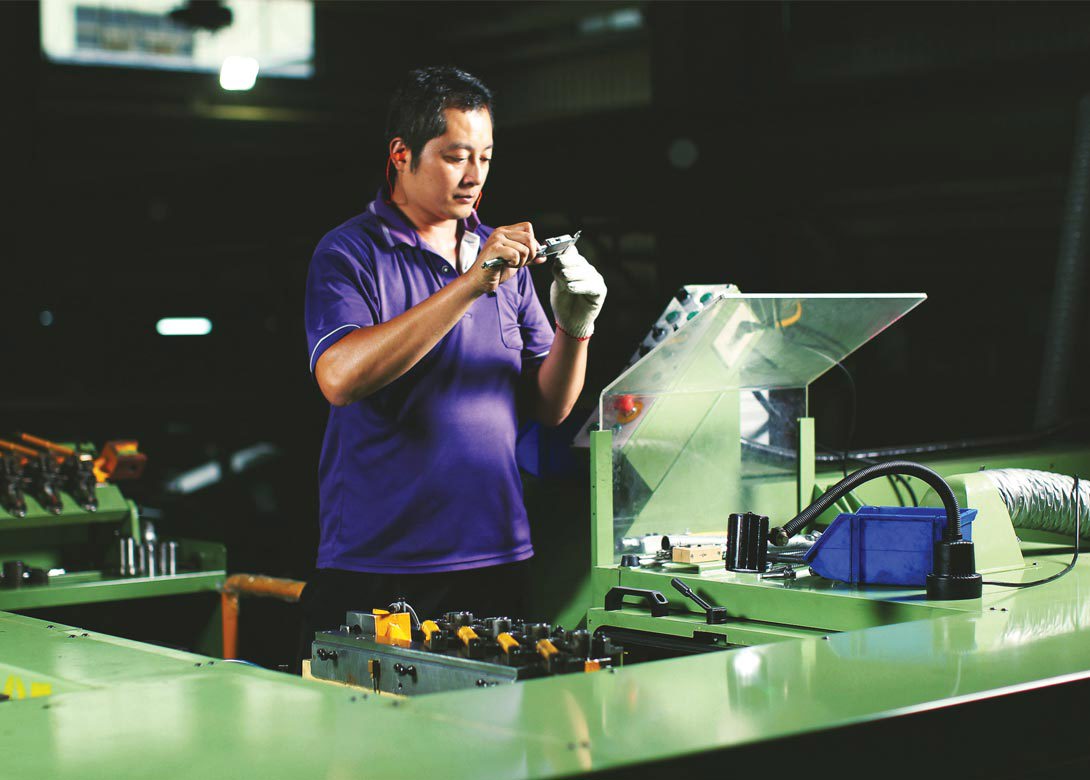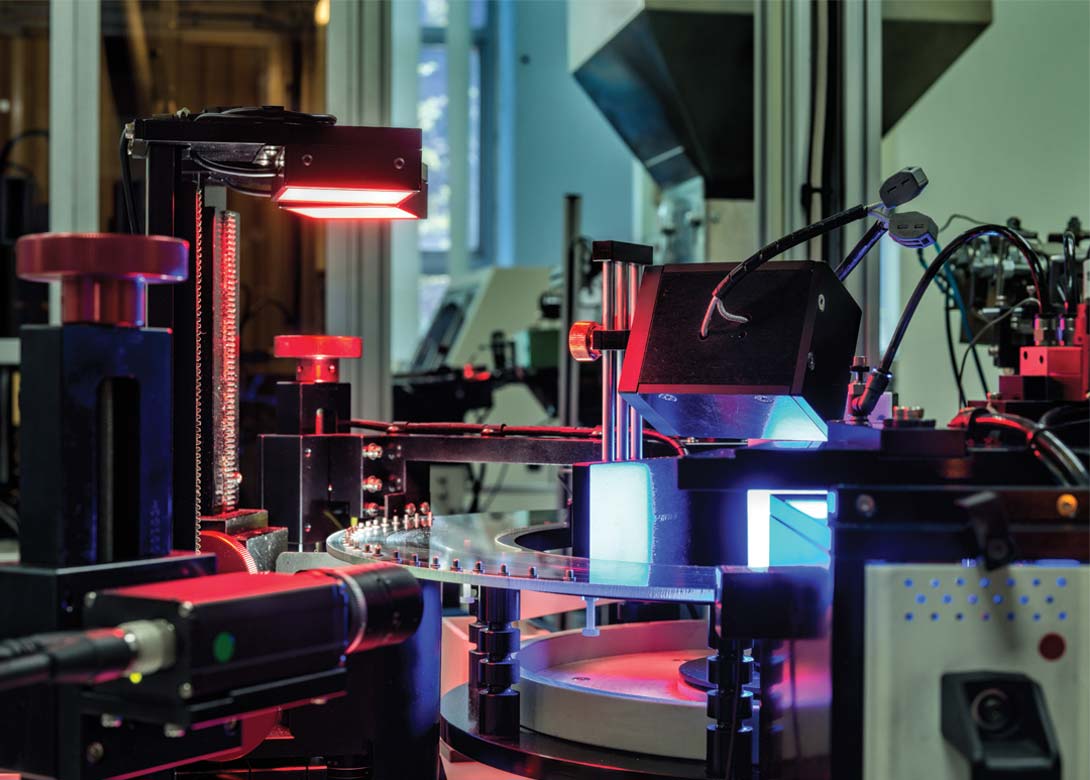
In the May edition Maddy Webb, director of quality at Trifast Plc, looked at the importance of quality within the fastener industry. Here, she focuses on the role fastener quality plays with customers and the expectations regarding zero defects.
Why should the fastener industry care about fastener quality and fastener standards?
“I believe that fastener quality and standards have never been more important, especially in today’s market where they are seen by some people as just an ‘add on’ item. In reality, they hold everything together and if they fail, the whole product fails. You cannot take away the importance of the fastener and if you don’t specify it correctly or don’t understand what is required, then you could end up in a lot of trouble.
In most cases the manufacturer of the fastener is often completely removed from where that component is going to be used, especially when the technical information and requirements do not travel down the supply chain. Without this knowledge the manufacturer is ‘in the dark’ regarding the quality and specifications required to ensure the product is ‘fit for purpose’.
In markets such as the aerospace sector, there is a requirement to pass this information down to the start of the chain – using non-disclosure agreements (NDAs) – so the manufacturer can see where and how the fastener is being used. However, in most industries those details never reach the manufacturer.
As a business we sit in between the customer and a manufacturer/supplier and it is our responsibility to ensure the fasteners are going to meet the requirements the customer is requesting. To do this you need to know what standards are suitable.
Fastener standards have been around for a very long time and they are widely accepted, but there is a growing trend in the market for ‘interpreting’ these standards differently and saying products are ‘of this type of standard’ rather than it MEETS this standard. If we allow this watering down of quality, it devalues the end product, as you can’t sell it as something it isn’t. It either meets that standard or it doesn’t. That is why we put a lot of emphasis on intellectual property on a fastener design – whether it is customer owned; a national or international standard; or a supplier’s proprietary item. By preserving the intellectual property of the fastener, you can make sure it does comply to exact requirements and you know what standard you are measuring against.”
How do you underline the importance of quality to customers in sectors where it isn’t necessarily a key factor?
“When you have a sector with an established network such as in the automotive market, with its clear structures and layers between OEMs and the supply chain, it is easier to highlight the importance of quality and make sure it is clear to everybody.
However, in other industry sectors, quality can actually be more important, but there is less infrastructure to support it. For instance, if something fails on a digger in operation it could be catastrophic but yet there are less layers of inspection; there is less work done in that supporting industry. This is true across a variety of different sectors, which means the need for quality is much higher as there aren’t all those layers to check against – it has to be right first time. As a result, it is crucial we understand what is required and that we are very clear on what the customer needs. It is all about product quality, whereas with automotive the shift has become system quality.”
As technology and industry continue to adapt, how does quality play a role in these developments?
“At TR we have a slogan which is ‘the only constant is change’. We expect change and we like change. It gives us the opportunity to do something different every time. As an industry we supply so many different markets that every change that happens in manufacturing is going to come down to us one way or another.
RoHS for example is going through a change process, with the emergence of RoHS3. We will look to be ahead of that change by working with our supplier base, so when customers ask about the new requirement, we already know the answers and have a solution ready.
As a quality department our responsibility is assessing the impact of change on the quality system and how valid that change is within our own quality structure. Sometimes changes come along and it’s not far off what we are already doing, so we can develop our processes to meet the new requirements. However, sometimes it is a completely ‘off the wall’ change, and your initial thought is ‘how are we going to do that?’.
The role of the quality team is to almost preserve the integrity of the company system through that change process. A big factor in this has been the change to ISO 9001:2015 as it has moved away from focusing on just the quality department and instead now focuses on the quality of the business.
In an industry like ours, where you can have a hundred different customers interpreting a standard differently and coming up with their own requirements, it can be quite a challenge. We have to look at how we can effectively implement the change on each occasion. If we agree to do something different for every customer, we will come into problems as it is an impossible task. It is about getting the balance and systemising those changes, as well as looking at how we can address them without making them an exception. If it is a general improvement, we will look to adopt it for everybody, not just for one customer.”

We saw a move towards European quality standards in automotive (VDA6) in recent years. Is this continuing and if so, why?
“We are at the stage now where there has been a change in the standards and companies are tied up with implementing it. Typically, what happens is a company will implement a standard internally and then they go through the process of confirming it within their supply chain. For instance, with the automotive standard IATF 16949, customers have to make sure all of their sub suppliers have certain approvals, or plans to implement them if they haven’t, which can be time-consuming for quality departments.
The deadline for the IATF 16949 transition was only September 2018, and I expect it to be twelve months until everyone has settled down. After that, I expect everyone will go back to the VDA tools over and above that. One of the reasons is that VDA, especially 6.3, has product management requirements and expectations. You are actually looking at the planning to produce the part, and the production set-up of a single item, rather than the quality system. It is more production specific and it is about planning and management, as well as verifying your product. It is quite exciting because it is a really good framework to use and we are already using it with our supplier base. In terms of customers, that is not where the focus is right now, but it will be back.”
What is the realistic defect level to be expected of cold headed manufactured fasteners, without post production inspection/sorting? Will there be a time when there is no need for post inspection?
“There are standards out there that talk about a standard process and what you can expect to achieve, but they are quite outdated now. However, there is an expectation that you will not deliver defects to your customers, as a quality department we have to stick to this as it is a key requirement.
What is happening today is the cold heading processes are producing the products very quickly, as ‘time is money’. The speed of manufacturing is so fast there is an acceptance there might be a slight deviation in measurements, which is why sorting machines are used at the end of the process to check the products. However, the sorting machines are not checking for everything. In total you are checking for five or six features at a time, depending on how the machine is set-up. You are therefore not doing a 100% check of every feature on the product, but we are not having fasteners rejected all day, every day. So you would have to say there are a large number of product features that are delivering time and time again. Due to the production speed of the machines, I do not think we will ever get to a stage where there is no need for post inspection for specific product features.”
How important are quality checks during the production process?
“This is about the difference between measuring something and checking it between limits. The benefit of measuring something during process inspection is that you actually get to see the change in a dimension. As the die wears you expect the size of the fastener to change, because the cavity is getting bigger and bigger every time. By measuring the die, you can see exactly how it is wearing and you can apply SPC (static process control) to predict at what point you need to change the die. If you check something and apply a ‘go/no go’ check, or don’t check until the very end of the process, you cannot get this type of valuable data, so you are never going to work out how long certain things are taking or how they progress.
You can learn so much through the production process, and it is especially helpful where machines are older and need more monitoring and adjusting as things can change from one batch to another – such as how the material feeds in or how much lubrication on a bar of material is needed. If you don’t have that process monitoring, you miss all these opportunities to improve. There is a lot of skill involved and we sometimes undervalue that or don’t recognise it at all.”
Is a zero defect policy a realistic expectation?
“There are two ways people look at this question. We could look at our performance for our customers and tell you that zero defect is a reality. We are giving customers zero defects across many products – day-on-day, year-on-year. However, it is not just the fastener manufacturing process that is delivering zero defects, it’s the end to end process that is being measured.
Within the fastener market there are standard processes such as forging and threading that are well established within the industry. Customers know about setting the machines; about first off inspection; about process inspection. These processes have been designed and adapted to deliver no defects to customers in the most practical way. However, whilst these processes are robust and contribute to zero defect, they are not fool proof and they do not guarantee it.
The key word is ‘guarantee’, because that is what customers are looking for. As a business we can never guarantee zero defects, but that doesn’t mean you shouldn’t have a zero defect philosophy and work towards it continuously.”

Biog
Will joined Fastener + Fixing Magazine in 2007 and over the last 15 years has experienced every facet of the fastener sector - interviewing key figures within the industry and visiting leading companies and exhibitions around the globe.
Will manages the content strategy across all platforms and is the guardian for the high editorial standards that the Magazine is renowned.






